KEY POINTS:
- Education and skills should be treated like any supply chain
- Not getting through to the people rail needs to attract
- Link supply to demand
- Materials for skills development shoudl be more accessible
 Read the peer reviews for this feature.
Read the peer reviews for this feature.
Download the graphs for this feature.
Dear Patrick McLoughlin, Secretary of State for Transport:
Britain relies on rail. Britain needs a productive railway and a high-technology rail system. Our national rail and underground systems are complex, requiring more than 200,000 people to run the networks and provide the services.
The rail industry provides a good career, with the industry growing faster than many sectors and opportunities increasing. Staff turnover is low and many people work in the sector for their whole working life. The body of experience about the rail system is immense. But because a significant proportion of the current workforce will retire in the next ten years, the industry could lose much of this experience.
Rail is changing, however, and making a generational leap in the use of digital technology. The large investment in the network, the doubling of passenger numbers to record levels, and the application of new technologies in rail systems is imposing new demands on the number and type of skills needed.
Computerised traffic management systems, use of remote sensing technologies for asset and condition monitoring, communications technologies, smart systems (for example, ticketing), and the use of advanced materials and technologies in new trains - rail technology is catching up fast with other sectors. Rail is a high-technology service industry.
So the rail system, currently run by tens of thousands of highly experienced individuals, will evolve to embrace a knowledge-based, advanced technical workforce with high-level and transferable skills, defined by qualifications and supported by structured flexible learning.
Currently the rail industry has a low proportion (15% - National Skills Academy for Rail Engineering, 2012) of people qualified to Level 4 (HND equivalent) and above, compared with other technology-driven industries. The digital rail system will require a higher proportion of skills from Level 3 (A levels/National Diploma) and above. The Treasury Productivity Plan (July 2015) states that provision “needs to be re-focused to deliver the higher-level skills employers need” - and this is particularly true for rail.
From NSARE’s consultation with the industry for the National College for High Speed Rail (NCHSR), it was clear that employers want talented, committed, ‘rounded’ individuals with transferable skills, including leadership potential and commercial acumen as well as specialist technical knowledge. This requirement will widen the appeal of rail for people from all backgrounds (social and academic), and help improve the diversity of the rail workforce. The curriculum at the National Training Academy for Rail (NTAR), developed jointly by NSARE with Siemens, supports this approach in the traction and rolling stock sector of the industry.
In rail engineering alone (track, traction and rolling stock, signalling and telecoms, power) NSARE estimates that over the next five years the industry needs more than 3,000 new entrants at L3 and above to replace those leaving, plus a further 4,000 L4 advanced technicians to meet advanced technical demand.
And half of these need to be female if we are to double the current very low female proportion of the workforce to 10%. Add in the service and operations side of rail, and a further 3,000 L4 advanced technicians are needed.
That’s 10,000 over five years - 2,000 per year need L4+ technical skills to replace existing retirees and increase the proportion of higher skills in the industry. Additionally, it is estimated that HS2 will require at least a further 1,000 each year from 2019 onwards.
The Government recognises this demand. To support the National Infrastructure Plan, industry in general and the rail industry, it is increasing the number of apprenticeships. A levy is also being discussed on large employers to support up-skilling and apprenticeships.
The education and skills system should be like any other supply chain, meeting employers’ demands for people ready, willing and able to work, when required. However, the education and skills system has not worked effectively for many years in anticipating and ensuring that there are sufficient skills when required. Instead, the education and skills system tends to operate independently of market need.
Nor do market signals for volumes of new skills flow from the demand side (industry) to the supply side. So we have shortages. And the ‘batch’ production approach compounds the problem by providing a flood of ‘skills’ onto the market in June each year. The market for many advanced technical skills and the professions generally clears well through the university sector. Applicants to university anticipate growth sectors, and take up (and pay for) courses that will lead to high-growth sectors, providing those sectors with a ready supply of talent.
However, even though 50 UK universities are involved in accessing funding for rail research, just two offer rail-related first degrees. There is currently little rail-related provision post-Level 3, so visibility of the industry as a high-tech, successful industry to graduates or those making career changes is poor. By contrast there are more than 40 aerospace and automotive engineering degrees available.
The macro economic messages about rail, growth and technology have not got through to the people the industry needs to attract. To add insult to injury, if you type ‘rail’ into the main UCAS search box, it comes up with the response: “Did you mean fail?” Quite.
To meet the need for an effective skills supply chain, NSARE is promoting a national network, or ecosystem, of training and development. The national network links supply to demand by ensuring sufficient capacity is available for both up-skilling for existing staff and for conversion courses for new entrants, driven by skills intelligence and conversations with the industry.
Allied to a coherent national network of training and development is the need to innovate how individuals develop knowledge and skills. There will be a shortage of trainers, especially for higher-level skills. Therefore, there is a case for ensuring knowledge is accessible using digital and virtual technology, and moving image, to capture or simulate the operational rail environment, drawing on the experience and knowledge of those currently working on the rail system. And materials for skills development and assessment should be available online, to enable flexible learning and for use by those up-skilling as well as those new to the industry. With this approach a steady stream of talent can be delivered into the market for new skills.
Successful technical industries rely on talent. For rail, this means growth in Level 3 apprenticeships and above. NSARE’s work with the industry to develop the new Advanced Technician Trailblazer apprenticeship standards is designed exactly to meet the need for an industry-wide, relevant, level 3 apprenticeship programme. The new Trailblazer Apprenticeships now provide the perfect route into the industry or to continue into higher education.
The new National College for High Speed Rail (NCHSR) will provide a Level 4 curriculum from 2017. So, significant developments in both the quality and capacity of the training and development network for rail are coming on stream, to meet this increased demand for higher-level skills.
Recognising industry’s desire for rounded individuals with transferable skills, there is the ability to attract talented individuals from a wide variety of backgrounds (and who have studied at university) to join the industry, as well as those with specialist rail-related skills. Strategic relationships with selected higher education partners should be part of a compact arrangement to ensure that apprenticeships meet entry requirements onto technical degrees. This encourages talent to take the apprenticeship route, rather than A-levels, without any lessening of opportunity to gaining a university place. The clear message can be that in the rail sector, the apprentice and degree route will enable individuals to progress just as well as those following a conventional academic route.
In addition, through NSARE the industry can also take a co-ordinated, strategic approach to selected partnerships with Further Education Colleges, schools, academies and UTCs to promote entry to the industry.Trailblazer Apprenticeships in Rail, the new Level 4 curriculum of the NCHSR, and more opportunities for rail-related study at university will all create a career development structure similar to other industries and professions, and enable rail to compete successfully for talent.
We need a different approach, and NSARE is well placed to deliver this approach - a responsive skills system for the rail industry.
- NSARE’s skills intelligence is used to send messages about future demand to the supply chain and attract talent.
- NSARE can use its rail industry skills intelligence to ensure there is sufficient capacity and capability in the skills supply chain, encouraging extra capacity (for example, L4 and above) where necessary.
- NSARE accredits provision.
- NSARE works with industry to develop relevant curriculum and content.
- NSARE can promote and develop flexible approaches to learning that benefit new entrants, maximise the opportunity to access rail-related knowledge, and as a result provide a steady supply of talent ready, willing and able to work, when required.
- NSARE can manage the levy on behalf of the industry.
Using its pan-industry position, skills intelligence and strategic view of needs, NSARE is ideally positioned to build an effective skills system for the rail industry. Thus the industry can enable advanced technologies, upgrade the national network, build HS2, improve services to customers, and improve productivity.
The end result of this work is a skills supply chain that works, aligned to current market needs and future requirements, thereby supporting the investment in skills to improve productivity.
But to make all this work - to deliver the supply of apprentices and new entrants - the rail industry has to be open to taking on more apprentices, providing opportunities for work experience, allowing job shadowing and access to assets, sponsoring and mentoring new entrants. And, critically, recruiting the talent that comes through the skills supply chain.
A world-class skills system for rail will give a generous return on investment for the industry, through increased productivity and a flexible, talented workforce.
Untangling the track: the role of skills in boosting productivity
By Michael Davis
Chief Executive, UK Commission for Employment and Skills
“How did the track get ‘tangled’ in the first place?” asked my young son, after seeing a sign at London Bridge station advising passengers about the ongoing engineering works.
I tried to explain that the track wasn’t tangled in the same way as a set of headphones might be, and that the notice was about the work being done to improve how trains enter and leave the station. “More trains and fewer delays,” I added. But my son remained unconvinced, and I turned to Google for a better explanation.
“Untangling the track” at London Bridge is, at its core, seeking better outcomes for a given set of inputs. And it neatly illustrates the ‘productivity puzzle’ that has recently filled many column inches. The economy is ticking along fine (robustly actually, with strong employment and growth), but our achievements are based on doing ‘more and more’ rather than doing more and doing it better.
How to fix productivity growth in the UK has no simple or single answer. The solution will be multi-faceted, and require collaboration between a number of different parties, including employers, government and educational institutions. However, we at the UK Commission for Employment and Skills (UKCES) believe that the skills of the workforce - and how these are put to use in the workplace - should be part of that solution.
The recession of 2008 and 2009 is distinct from previous ones in three ways. Firstly, the loss of output was unparalleled in modern times, and took some time to recover. While the economy is once again expanding robustly, productivity growth has stalled at levels some way behind those in the US, Germany or France (see chart, right). If we were to match the productivity levels of the US, every family would be about £21,000 better off every year (Fixing the foundations: Creating a more prosperous nation - Her Majesty’s Treasury, 2015). In contrast, in the recessions of the early 1980s and 1990s, productivity growth continued and the economy was back on the mend more quickly.
Secondly, given the gravity of the 2008 crisis, the fall in employment was milder than might have been expected. At its peak, unemployment only reached 8.6%, significantly lower than the dizzying heights of 12% in the early 1980s and 10.8% in the early 1990s.
Unemployment is also recovering much more quickly than it has done previously, and is already approaching levels typical of the pre-recession period. Encouragingly, the improvement is down to economic growth rather than individuals withdrawing from the labour market, as has been the case in some advanced economies.
Third is the fall in pay. Although the latest indications are that pay in real terms is beginning to grow once more, the 2008 recession marked the start of a sustained decline in pay, of a kind unseen in the post-war era.
The explanation for the fall in wages could be attributed to workers willing to accept lower remuneration to maintain employment. But as unemployment returns to pre-recession levels, that reasoning starts to look weak. One alternative is that wages have fallen because productivity has fallen. Mapping growth in productivity to changes in pay seems to suggest a link between workplace productivity and employee earnings (see chart, opposite).
During the 1990s and 2000s, skills played an important and sustainable role in driving productivity growth. As the opportunities to participate in higher education increased, so came a substantial boost to the supply of high-skilled workers.
And the expansion of the talent pool has continued, making a positive contribution to productivity growth every year, even during the recession. We forecast an increase in those qualified to
Level 4 and above from 37% to 47% by 2020, with the fastest growth in post-graduates (Levels 7-8). We also project a decrease in the proportion of the population that holds no qualifications, from 9% to 6% (UK skill levels and international competitiveness, 2013. Evidence Report 85, UK Commission for Employment and Skills, Wath-upon-Dearne).
Compared with other OECD members, the UK fares well on higher-level skills (those with a tertiary education), ranking 11th out of 33. But lower down the skills hierarchy, the UK’s performance starts to falter. It stands 24th for intermediate skills, with 37% of the population holding upper secondary qualifications. And it ranks 19th on low skills - 18 OECD countries have fewer people with low skills (below upper secondary education) than the UK, including Japan, the Czech Republic and Slovakia.
So the UK does well in generating highly qualified workers, but is much less successful at developing the skills of the rest of the workforce. The OECD’s survey of Adult Skills found that a significant minority of adults in the UK have a very low level of proficiency in literacy and numeracy. The findings also depict a worrying gap in the UK’s workforce between the skills-rich and the skills-poor. And this polarisation is at risk of becoming even more pronounced, as those who have previously engaged in learning are much more likely to continue to do so.
The UK excels at creating high-skilled jobs. During the past decade, the UK has added more of these than any other European Union member state - 2.2 million from 2006 to 2013, out of a total of 5.1 million added across the EU.
The rise in high-skilled work in the UK has been a positive development. It has meant that the economy has been able to support a rapid expansion in the graduate workforce, while maintaining the higher rates of pay that graduate jobs tend to offer.But, while trade and technology complement high-skill labour in doing complex and creative work, they also substitute middle-skill labour engaged in more routine tasks. Comparing 1992 and 2022, there will be some additional seven million high-skill managerial and professional jobs alongside 2.4 million additional service-intensive roles. These gains sit in contrast to a loss of two million middle-skill jobs and 0.7 million labour-intensive roles. Over a 30-year period, the UK economy will add 6.7 million net new jobs, and nearly three-quarters of those new jobs will require high-level skills.
The shrinking in the number of middle-skill jobs means a loss of opportunity for those not able to enter high-skill jobs. Where once low-skilled workers could progress towards middle-skill roles as the basis of a career characterised by decent pay and progression, there is the risk that many now end up in low-paid jobs with few opportunities to move up. The loss of middle-skill jobs will lead to an increasing number of displaced middle-skilled workers, or new workers who will struggle to start a middle-skill career.
The squeeze on the middle has affected young people in particular. While the over-30s and the over-50s have experienced a fall in their share of middle-skill work, this is more than offset by an increase in their share of high-skill work. Instead, 22-29-year-olds have seen a decline in middle-skill work and (since 2005) in high-skill work. So where established workers either stay in middle-skill work or move up, young workers are finding it more difficult to enter into middle-skill work and climb the career ladder.
One way to improve young people’s access to high-skill jobs is to forge clearer vocational pathways. The potential benefits of this are reflected in the economic returns already achieved by high-level vocational learners.
New Higher Apprenticeships have been welcomed by employers and students, but they remain few in number. In fact, participation in the main vocational routes, such as Foundation Degrees and Higher Apprenticeships, do not make up even 10% of the level of participation in undergraduate degrees in England (Growth Through People: Evidence and Analysis - UKCES, 2014).
However, a higher skilled workforce and greater investment is no guarantee of productivity growth. What should also be taken into account is the ‘black box’ of factors that cannot be easily measured - this is also known as total factor productivity (TFP), and it has been in steady decline since the recession (see chart, below).
In short, it is a measure of how effective the economy is at turning labour and capital into outputs, and it covers factors such as the effective use of technology and innovation, the market’s ability to direct resources to the most efficient businesses, and the management and leadership of organisations. It is the latter of these in which we at UKCES are most interested.
Compared with a sample of major economies, the UK has a good share of businesses scoring in the top quartile for management practice. However, it also has a long tail of poorly managed firms, scoring in the bottom quartile (World Management Survey, 2004-2010 set).
One in five manager vacancies are hard to fill because of skills shortages (The UK Commission’s Employer Skills Survey 2013: UK Results. Evidence Report 81, UK Commission for Employment and Skills, Wath-upon-Dearne). And while most advanced economies have a large qualification gap between managers and employees, the UK has a much smaller one (see chart, opposite).
About a quarter of performance gaps between businesses can be attributed to differences in managers’ practices. Evidence in the US suggests that a manufacturing plant in the 90th percentile of the productivity distribution produces almost twice as much with the same inputs as the 10th percentile plant (What determines productivity? Journal of Economic Literature 2011, 49: 326-365).
If the UK’s productivity fall is at least in part explained by slacking TFP, then the high incidence of skills under-utilisation in the UK should also be investigated. More than one-third of employees in the UK have qualifications beyond those necessary to be hired for their current job, equivalent to about 11 million workers. It is possible to be overqualified but under-skilled. But even so, 15% are estimated to be both overqualified and over-skilled (Growth Through People: Evidence and Analysis - UKCES, 2014).
Paradoxically, given the UK’s relatively low share of workers with intermediate skills, those workers often find themselves doing work that is below the level for which they are qualified. If we are to raise the prospects of those with low skills, will our workplaces generate the job opportunities to make use of their improved skills?
Underutilisation has consequences. Employees unable to use the skills they have invested in are less likely to feel motivated, and as a result are less likely to make the discretionary commitment to make further efforts in the workplace. It all contributes to the productivity problem.
Alongside workers whose skills are not fully utilised, there are employers struggling to fill vacancies and employers whose workforce is not as skilled as they might wish.
Between 2011 and 2013, the Employer Skills Survey, carried out every two years by UKCES, found that while the number of overall vacancies increased by 12%, skills-shortage vacancies (a subset of vacancies, defined as “hard-to-fill” because of a lack of skills, work experience or qualifications in the candidates applying for a role) increased by 60%. Shortages comprise nearly a quarter of all vacancies, and tend to be concentrated in particular sectors and persist for long periods of time. These prevent employers from realising business goals and ambitions, and may hold back growth in productivity.
Across all occupations, the most common types of skills shortages relate to technical, practical or job-specific skills. These are best gained in a workplace setting, illustrating the critical role that employers must play in helping to overcome skills shortages. Shortages also focus on more generic skills such as problem-solving, planning and organisational, and customer-handling, as well as strategic management - all of which are best developed in the workplace.
The science, technology, engineering and mathematics (STEM) professional category has been among the worst affected occupational areas by skill shortages throughout this period, with an increasingly large share of STEM graduates immediately entering non-STEM roles. And the science, research, engineering and technology professional category has the highest density of skill shortages of any of the 25 occupational groups. At 43% it is almost twice as high as the overall average of 23%, and at 13,000 is the third highest of the occupational groups in terms of overall volume of shortages (Growth Through People: Evidence and Analysis - UKCES, 2014).
Skills gaps are much more widespread than skills shortage vacancies, with 15% of establishments reporting a skills gap and a total of 1.4 million employees missing the skills necessary to fulfil their job requirements (The UK Commission’s Employer Skills Survey 2013: UK Results. Evidence Report 81, UK Commission for Employment and Skills, Wath-upon-Dearne).
Around three in ten gaps are attributed to staff not having received appropriate training, while two-fifths are due to workers’ skills remaining inadequate after receiving training. In many sectors, little more than half of employees receive training, and even then for many it is a relatively small amount.
Four in ten employers recognise they should train more (The UK Commission’s Employer Skills Survey 2013: UK Results. Evidence Report 81, UK Commission for Employment and Skills, Wath-upon-Dearne). Again, having employees in roles that they cannot perform proficiently adversely affects the productivity of businesses up and down the country. In our efforts to solve the productivity puzzle, skills are by no means a simple or single solution. Investment, better use of technologies, competitive markets and planning all have a role to play. What is clear, however, is that what happens in the workplace matters to us doing more and doing it better. How we develop, deploy and retain the skills and capabilities of people all matter in untangling the track.
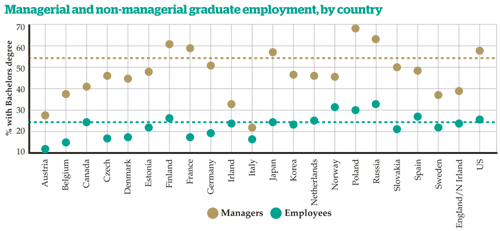 Read the peer reviews for this feature.
Read the peer reviews for this feature.
Download the graphs for this feature.
 Peer review: Terence Watson
Peer review: Terence Watson
UK Country President and Transport Managing Director - UK & Ireland, Alstom. Rail Supply Group Co-chairman
As Neil highlights, now is a critical time for rail. We have a potentially thrilling decade ahead of us, with massive investments. But we risk throwing some of our opportunities away because of our poor people management. The facts are stark, the challenges enormous and, let’s be frank, we’ve been too slow in responding.
We face a mass exodus of skilled people leaving through retirement, and still with not much more than a trickle of new blood coming in. The need to replenish our workforce with a new generation of highly skilled workers and new, cross-disciplinary skills – in planning, operations, commercial and project management – is urgent. And we have to appeal to a new generation with fresh language and new ideas. As my colleague on the Rail Supply Group, Paul Francis, often says, we need to appeal to the ‘X Box’ railway generation, not the ‘Hornby’ railway generation.
NSARE’s analysis and proposals are central to the industry’s response. They are a sobering reminder of the challenge we face in upskilling and replacing the aging workforce – a challenge that is only compounded with every passing month. It is a scandal that currently only two universities offer rail-related first degrees, in stark contrast to the 40+ aerospace and automotive degrees available. We are in competition for people with these industries. We should be way ahead, not playing catch up.
We have a lot going for us. The Government recognises that rail is a vital part of delivering one of its top priorities: a big improvement in the UK’s productivity. Rail adds productive potential worth up to £10.2 billion a year to the economy and generates £9.3 billion of GVA a year. An efficient transport system moves people and goods up and down the country, allows businesses to cluster and enables innovation to spread. It opens up labour markets, catalyses urban regeneration and promotes socio-economic development. In a congested island economy, the value of a world class rail network cannot be understated.
So now is the time to demonstrate that our industry aims to be at the heart of the resurgence in UK productivity. We can’t do that without a new generation of skilled people and engineers – from all walks of life.
The National Training Academy for Rail (NTAR) is an excellent start and a key example of the industry collaboration required. The facility and curriculum on offer now needs promoting across the industry and vertically through the supply chain, from Tier 1 companies to SMEs. Likewise, the development of the National College for High Speed Rail will be an important building block for the industry, and we must get its focus right.
How we market ourselves to attract young people to a career in rail is fundamental, especially with regards to improving diversity. There is much we can learn from the ‘Ambassador’ programme run by the aerospace and automotive sectors here. I welcome the positive moves by Government in increasing the number of apprenticeships and consideration of an Apprenticeship Levy on larger employers (although the language could do with some modernising). This must take place at a devolved regional level to work alongside LEPs and local business to ensure that it is inclusive of the needs of SMEs.
The Rail Supply Group (RSG), which I chair with Patrick McLoughlin and Sajid Javid - is providing strategic guidance to the industry on the big challenges ahead. We are developing a Rail Industrial Strategy and working closely with Network Rail, the Rail Delivery Group (RDG) and Department for Transport (DfT), so that for the first time this will provide a coherent and comprehensive plan of action from the supply side of the industry. NSARE is at the centre of our People and Skills work stream as the established delivery unit for an Industry Skills Strategy. The RSG vision is to transform the capability and competitiveness of the UK rail supply chain, at home and abroad. We intend to attract the very best UK talent to create a sustainable skills base and develop new technologies.
Britain is the home of the railway. For too long that has meant we have been considered antiquated and outdated. But with technological advances, high speed rail, the digital customer, ETCS and electrification, we are at the dawn of a new era. We have new opportunities that we must grasp with both hands, so that we can revitalise a proud tradition of British leadership in rail.
 Peer review: Mary Kenny
Peer review: Mary Kenny
Chief Executive Officer, Eversholt Rail
Neil makes a number of relevant points in his letter about the future of skills in the rail sector. It is clear that there will be an increasing demand for skills in the sector, and it is good to note the various government and National Skills Academy for Rail Engineering initiatives that are being put in place to address the shortage.
Additionally, I believe there needs to be more effort in promoting rail as a great career, and in mobilising individual companies within rail to promote the industry and to create optimal conditions for employees to thrive in.
As Neil points out, rail provides a good career. But there is a real lack of awareness of rail as an attractive career path, especially in our schools and even at our universities. The rail industry needs engineers, but it also provides excellent opportunities for many disciplines including finance, sales, IT, HR and general management. This can often get overshadowed by the focus on the need to attract engineers.
While I believe the current leaders of businesses within this industry should not be relying on pan-industry initiatives, but instead ensuring that they are making a difference in their own organisations, there are undoubtedly some areas where additional pan-industry initiatives could be valuable.
Although the industry is not known for its PR skills, perhaps it is time to consider initiatives such as a major TV campaign to bring rail into the consciousness of future generations. The impact of the screen can be seen with the amount of discussion that programmes on Crossrail have generated. I have had more conversations about the rail industry with people outside the industry as a result of this programming than any other thing I can think of.
Some work is already being done, as exemplified by the Routes into Rail initiative (www.routesintorail.co.uk) where a flashy website and a video has been put together to showcase the various opportunities available in the industry. As Neil points out, the industry is becoming much more high-tech, and hence the image needs to evolve accordingly - this will make the sector more attractive to newcomers.
In addition, we need to broaden our perspectives on where and how we recruit people into the industry. We need to create relationships not only with universities and secondary schools but also with primary schools, in order to foster a longer-term interest in the industry. We need to target people from diverse backgrounds and other industries, in order to be supplied with fresh perspectives and more diverse skills sets. To do this, we need to think of innovative and flexible ways of employment - for example, the Thames Tideway Tunnel Returner programme, where the purpose is to attract people back into the industry after a career break.
And to address the current issue of a real shortage of leadership skills at senior levels, the rail industry is well positioned to meet the demand from high-calibre leaders from other industries looking to work on a more flexible or part-time basis, compared with what their current industries are able to offer.
It is also true that a significant proportion of the current workforce is set to retire in the next ten years. However, as we have seen at Eversholt Rail, those who retire (or who are thinking about retiring) are often not about to stop working. As with our trains, we should focus more on ‘life extensions’ for our late-career employees, offering them more flexible work and benefiting from their experience and expertise in a mentoring and coaching capacity. As we redesign our performance appraisal process at Eversholt Rail, the idea of the ‘Sixty Year Career’ will be firmly placed at the heart of the process. This, I believe, will alleviate the pressure on the leadership and management skills shortage, as we would be able to foster the necessary skills in the future generations.
But while a focus on attracting newcomers is relevant, it should not be at the expense of providing excellent career development opportunities and working conditions for our current employees. As Neil states, staff turnover has been low and many people work in the sector for their whole working life, but we cannot rely on this as the younger generations will not continue to display such loyalty.
According to LinkedIn’s recent report on Why and How People Change Jobs in Europe, the top two reasons why European employees changed jobs were a concern for career opportunities and wanting more challenging work. Interestingly, the third reason was being unsatisfied with the leadership of senior management, and the fourth was being unsatisfied with the work environment/culture. By having robust career development frameworks and by investing in leadership and management skills, as well as by creating productive working cultures, we can create environments that retain our employees to a greater extent.
Neil states that the “macro economic messages about rail, growth and technology have not got through to the people the industry needs to attract”. I firmly believe that this is where individual businesses can pick up the baton. By addressing the issues discussed above, attracting newcomers to the industry should be much easier. With the growth in social media (in both attracting and retaining employees), our employees will increasingly act as ambassadors and role models for the rail industry, contributing significantly to the promotion and sustainability of the industry.
 Peer review: Douglas McCormick
Peer review: Douglas McCormick
Chief Executive Officer, Sweett Group
As the country’s rail network gears up to deal with increasing demand, identifying what skills are required, how they can be taught and who can be trained is vitally important for an industry that is set to experience continued investment and expansion.
Major projects including Crossrail, the Northern Hub and the Edinburgh-Glasgow Improvement Programme, as well as the large-scale electrification of the network and improved connections to ports and airports across the country, will undoubtedly require many more skilled workers.
The UK Commission for Employment and Skills (UKCES) recently published a report that highlights the mis-match between supply and demand when it comes to skills in the UK, claiming that “more of the existing workforce has gaps in the skills they need to be proficient in their jobs”. And it paints a damning picture of how this issue is being tackled, saying: “There is limited movement on measures of training and development activity, and indeed some signs of decline.”
This dearth of training must be addressed by the rail industry, with employers taking a lead on moving the country towards a demand-led education model, featuring improved communication between employers and education providers as to what skills we need ‘on the ground’.
We need to make use of our National Skills Academy for Rail Engineering (NSARE) as a vehicle to align multiple initiatives, to avoid reinventing the wheel, and to ensure a focused and co-ordinated approach to tackling the issue. There should be multiple pathways to training, with further education, higher education and apprenticeship providers all delivering credible, high-quality courses that suit the needs of learners and employers alike.
At Sweett Group, we have a quantity surveying apprenticeship programme that is designed to give young people an opportunity to learn on the job while working towards both an NVQ level 3 in Quantity Surveying and a BTEC in Construction and the Built Environment. Through our partnering with The Construction Industry Training Board and Havering College, we are able to offer a programme that features both practical and theoretical training, providing our apprentices with the skills they need to succeed in the industry. Modern apprenticeships are a fantastic way of providing our industry with highly capable workers - they also represent a great deal for learners, as they are able to earn while training.
Another important element to recognise in our education planning is that the skills we require are changing - software engineers are now as essential as civil engineers to the development and running of our infrastructure. We need to work with educators to encourage the teaching of science, technology, engineering and maths (STEM) skills, and develop ways in which the industry can demonstrate how these skills can be applied in practice, in order to encourage young people to consider a career in our industry.
As Neil’s open letter mentions, there are remarkably fewer rail-related degree courses available than those in the fields of aerospace and automotive engineering, and we should look to those fields to understand how we can catch up.
Furthermore, diversity is a key issue that employers in the rail industry need to tackle, as just 5% of the technical workforce is female. Employers should look to develop flexible working practices to attract a more diverse range of people to the industry. Schemes designed to help disadvantaged young people into work should be a target for the rail industry, as we cannot afford to see potential go to waste. I also greatly advocate employing people coming out of the armed forces - in my experience, ex-military personnel are highly-skilled individuals with excellent transferable skills.
Finally, within the working environment, we should continue to innovate to address issues of low productivity. The UKCES report identifies that “opportunity and performance are linked”, so therefore we should be pursuing a culture that nurtures and harnesses talent. Soft skills and transferable people skills should be considered just as valuable as technical skills, as it is clear that productivity and staff retention are heavily influenced by the environment people work in and the quality of the management that they receive.
Above all, we need to attract people with the potential that this industry needs and give them opportunities to grow and succeed, so we can take a big step back behind the yellow line.
 Peer review: Tim O’Neill
Peer review: Tim O’Neill
UK Chief Executive Officer, Systra
There is no doubt that the UK rail industry is facing a skills and recruitment challenge - greater, perhaps, than at any time in living memory. Neil has done an excellent job at outlining the reasons for it and some of the critical steps that must be taken to address it head on, including the establishment of the National Skills Academy for Rail Engineering.
Our railways are certainly changing fast. They are changing because society is changing. Not just in terms of technology, but in the rapid progress towards knowledge-based economies. The individuals who best thrive in such an environment are very often those with the flexible, adaptable and (as Neil emphasises) transferable skills that are sought by every employer. If we want them in rail, we will have to fight for them.
We are talking about a new breed of employee - one who is comfortable in the rapidly changing, fluid social environment of today and the future, not just because of training and skills but because they reflect the social diversity that is a defining characteristic of that environment.
For these men and women ‘diversity’ is not just a human resources slogan but a lived reality, and if rail doesn’t reflect that it will be competing in the marketplace with one hand tied behind its back. That is why I believe that diversity needs to be emphasised ever more in our discussions of the skills, recruitment and training agenda.
Rail has a problem in this regard - we are too male, pale and stale. Doing something about this, making rail a natural career for people of all races, genders and sexualities, is not simply a matter of ticking boxes; it is essential if we hope to compete for workers who will have many other choices, and if we want to ensure that rail is truly alert and responsive to the social changes being lived by our customers.
Attracting a more diverse workforce is not just a question of removing obstacles, it requires imaginative, radically new approaches. The industry should be working as a matter of urgency to spell out what these new approaches should be, ideally in close collaboration with representatives of the social groups that we have to attract. That is a lot about diversity - not because there are no other great challenges, but because correcting the mono-cultural bias in the workforce will be an important part of addressing all of them. Implementing, managing and operating the accelerating technological changes in rail is going to be a huge undertaking - perhaps even more so than Neil’s letter suggests - because for most rail workers it will be a project that involves interlacing modern technologies with ageing legacy stock rather than ‘greenfield’ projects such as HS2.
The engineers and others who take this on will have to be the best in the world, and the approaches described by Neil will go a long way towards delivering them. But we are a technologically minded industry, good at finding technical solutions to technical problems. We are less good at the other stuff, so it is essential that we keep our focus on some of the important non-technical problems - too often dismissed by certain elements in the industry as mere political correctness - if we are going to achieve a truly modern rail system fit for the future.

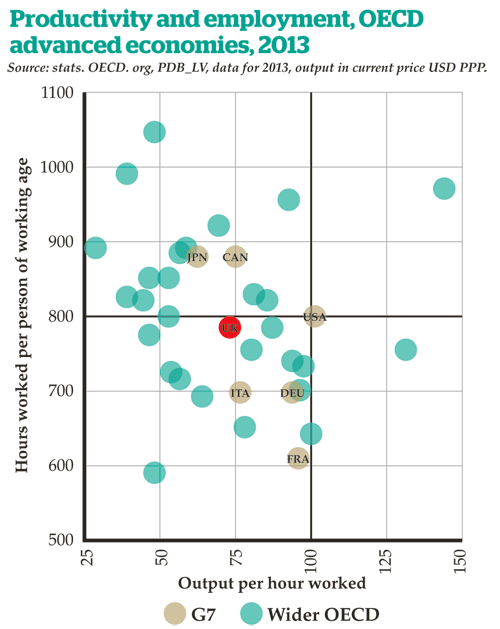
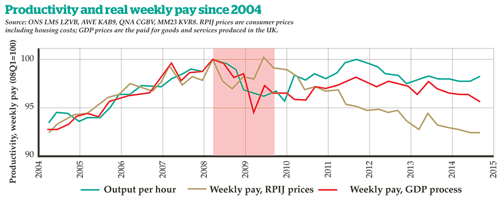
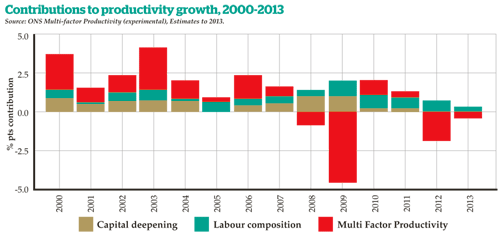

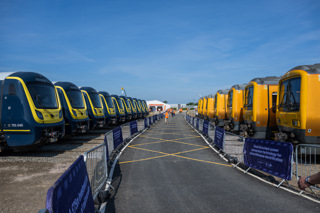
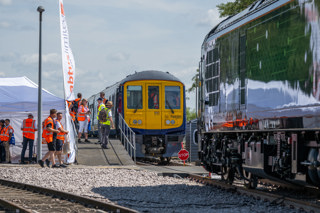













Login to comment
Comments
No comments have been made yet.